Special places, amazing creatures
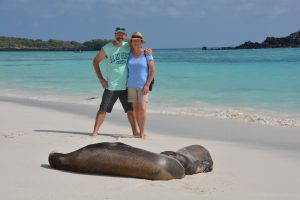
Julie and I make friends easily, especially with these two lazy sea lions on a beach in the Galapagos
Life on board the Archipell 1 was pretty relaxed. Our cabins were very comfortably furnished, if a bit small, and the common area where we ate and socialised was quite roomy for our small group. But the most popular spot on the ship was the open observation deck, partly covered to provide protection from the equatorial sun, a place to take in the views, look for wildlife, watch the sunset and socialise. We had been lucky in picking an ideal ship for our needs and joining a very good crowd of people.
The next morning we woke up at Espanola Island, the southernmost and oldest of the volcanic islands in the group. At Gardners Bay Beach we went ashore to walk amongst the docile sea lions, lounging in the sand, the three-month old pups noisily nursing from their mums. This was a beautiful soft stretch of sand, made more interesting in that is was an ‘organic beach’, that is the sand is from the finely crushed bones of animals over the millennia rather than from crushed stone. We also saw a number of colourful marine iguanas and a variety of birds.
Soon after we ventured to a cliff face of a nearby island for a fabulous snorkel, the water a perfect temperature for the blistering hot day, beautiful colourful fish swimming all around, a large sting ray gliding beneath us and three sea lions swimming past as they checked us out. Very cool.
The Archipell 1 changed locations on the island over lunch and in the afternoon we went ashore for what proved to be a real highlight. We walked over two kilometres on a trail that followed the cliff line, the huge crashing surf down below, surrounded by any combination of sea lions, marine iguanas, blue footed boobies, nasca boobies, the large frigate birds and many other birds. The stunning views along the cliff line were the real star, a blowhole shooting water high in the air, birds perched on every ledge, iguanas taking in the last warm rays of the day and sea lions lolling about without a care in the world. It was hard not to think we were in some sort of zoological dream. We loved it.
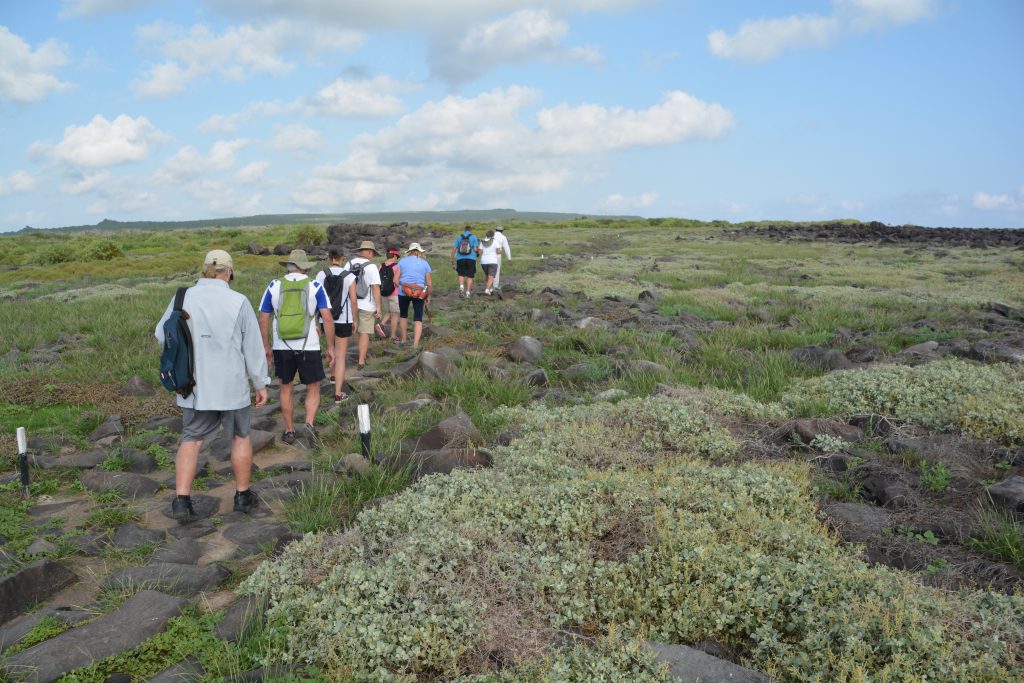
We had a good walk out in the open of the island which gave us a new perspective and a bit of sweaty exercise
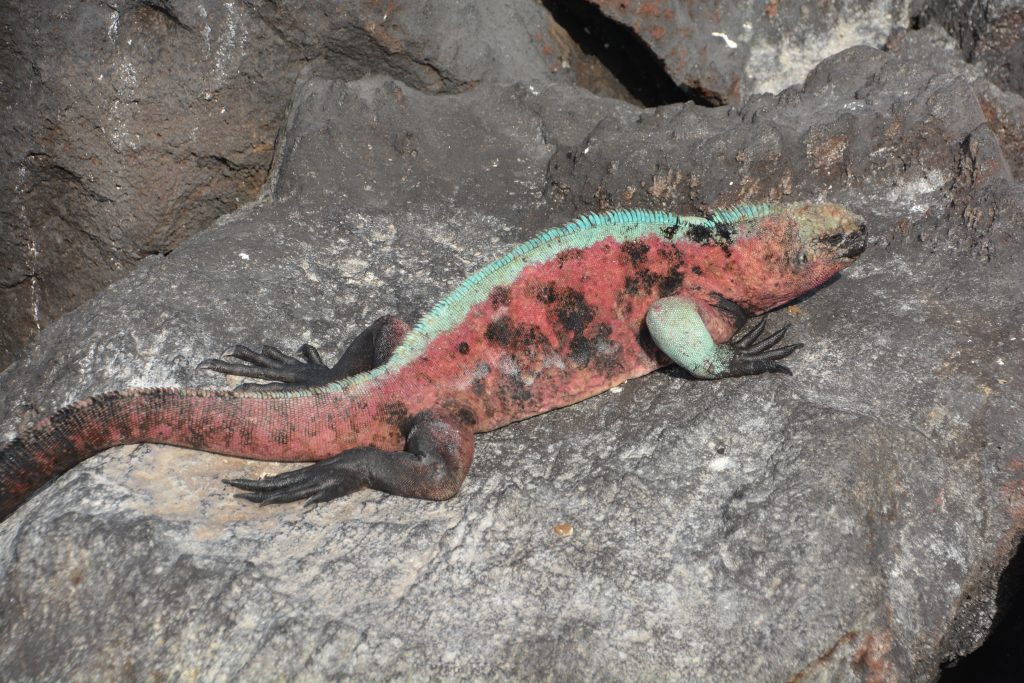
These marine iguanas are colourful and slow to move – you could step over them if they were on your path
The next day we woke of the coast of the remote island of San Cristobal in a quiet bay with a short sandy beach, dramatic cliffs on either side and towering desert mountains as the background. Known as Punta Pitt, this was not the green and fertile islands we had seen before, this was dry, dusty and rugged. We went ashore and immediately climbed up and over the first saddle, passing many bird nests including the red footed booby which we hadn’t seen up close yet. The views from the top of the ridge were unreal, the sparkling ocean beyond the steep mountain walls and a couple of tourist boats bobbing in the bay.
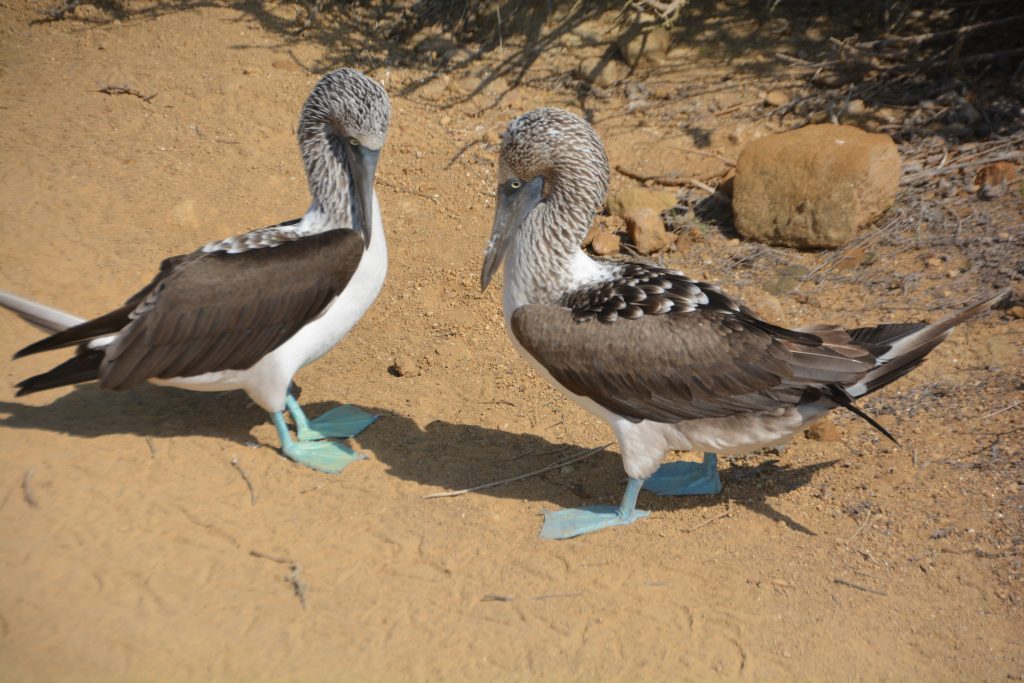
The much more common blue footed boobies do a little courtship dance while they get to know each other
Julie and I then opted for a paddle in one of the large blue sit-on kayaks and had fun following the coast a short ways, sea lions sleeping on the rock shelf, birds perched high on the smallest of ledges. At one stage a sea lion joined us in the water and poked his head up to get a closer look at this blue whale of a thing that was in his water. Perhaps he thought about playing with us, as sea lions are known to do, but in the end he ducked back down and disappeared.
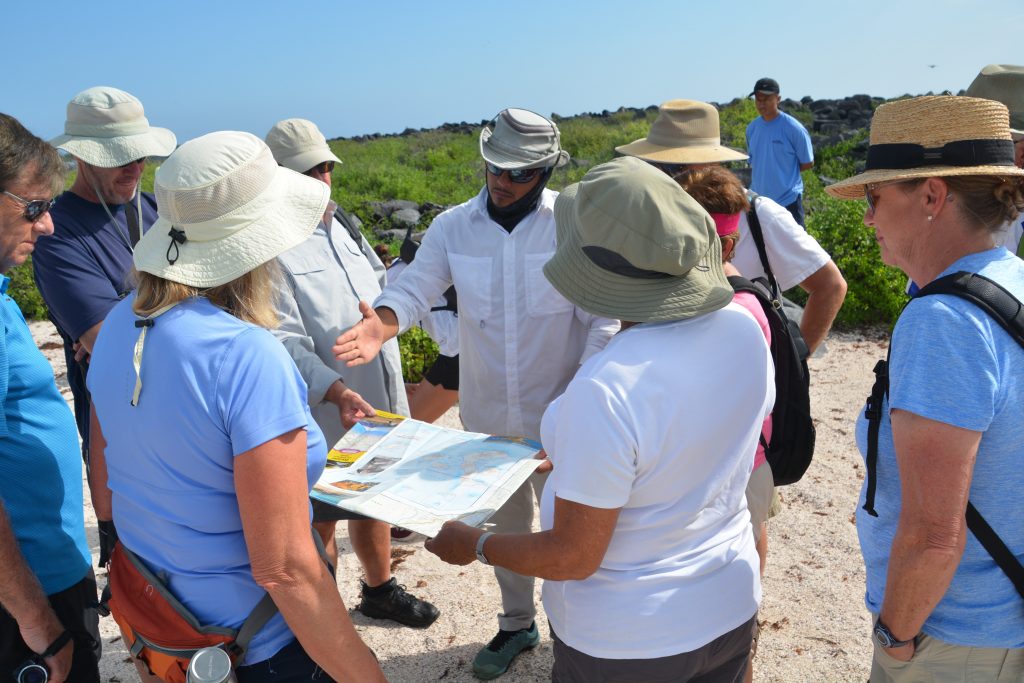
Our guide and naturalist Gustavo explaining how the Galapagos Islands are slowly moving and some are disappearing while others are getting larger
We relocated further along the coast to a place called Cerro Brujo and after lunch took the zodiacs right along the neck-bending cliffs that rose vertically 250 metres (about 800 feet) and motored through a lava tunnel that had formed at water level. We then walked along a long sandy beach, stepping over sleeping sea lions, admiring sunning marine iguanas and watching the boobies dive bomb for their fish. The scene on this beach with the towering cliffs, the crashing surf and the animals all around us provided a great summary of what Galapagos is all about. We felt very lucky to be there.
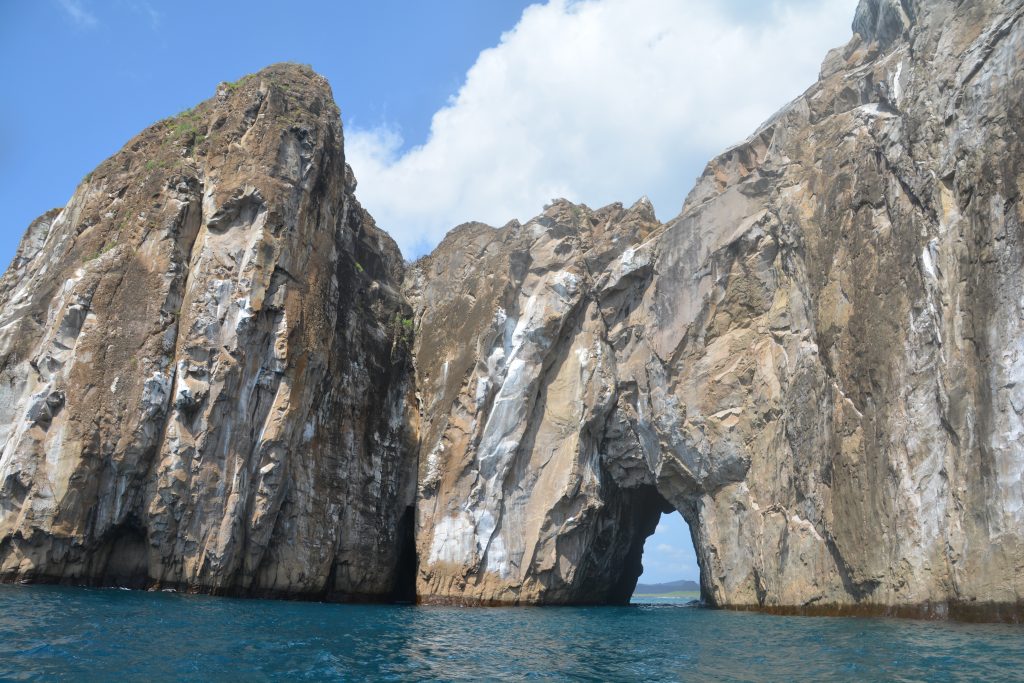
A very cool lava tunnel in the cliff shoreline of San Cristobal Island – which of course we motored through in our zodiacs
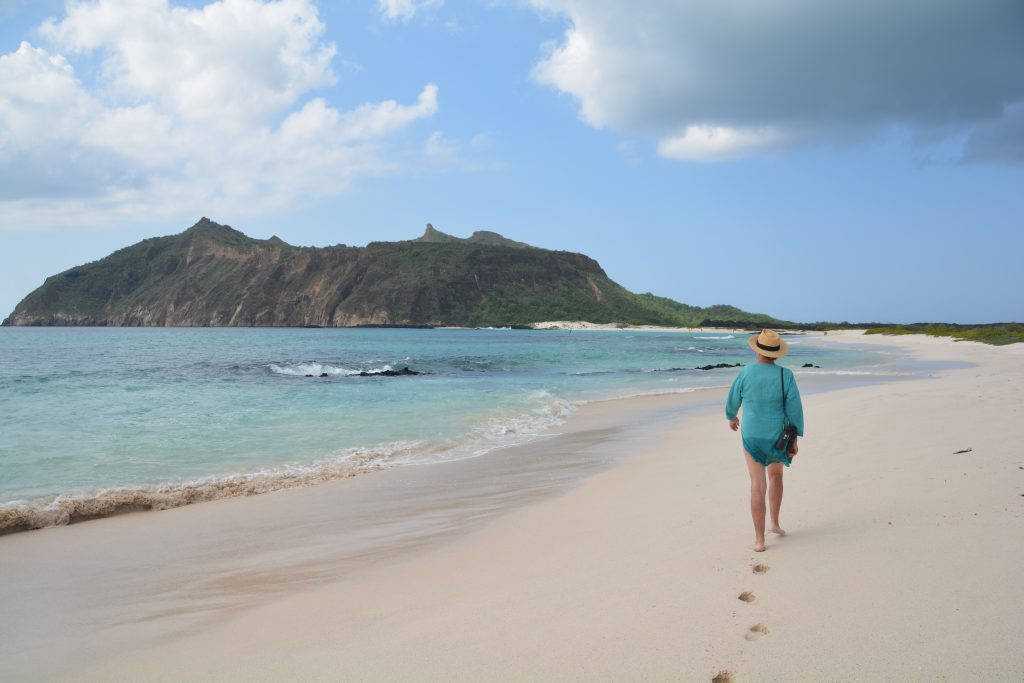
Our last beach in the Galapagos gave Julie and I to stroll by ourselves – and all the animals we might see along the way
The last night on the Archipell 1 was filled with speeches and toasts and goodwill amongst new friends as we packed our bags and begin the process of returning to the real world. We were moored in the small port town of Puerto Baquerizo and picked up phone reception, the first time in five days. Life was about to return to normal again.
Or was it? At 0600 the next morning we boarded the zodiacs again, the early dawn upon us, and motored to a little refuge of volcanic rocks called Lobos Islet. Sleepy sea lions greeted us at the landing by barely raising their head and opening their eyes as we stepped over them, pairs of blue footed boobies were going through their comical mating ritual of dancing and fluttering their feathers and iguanas emerged from the cracks in the rocks.
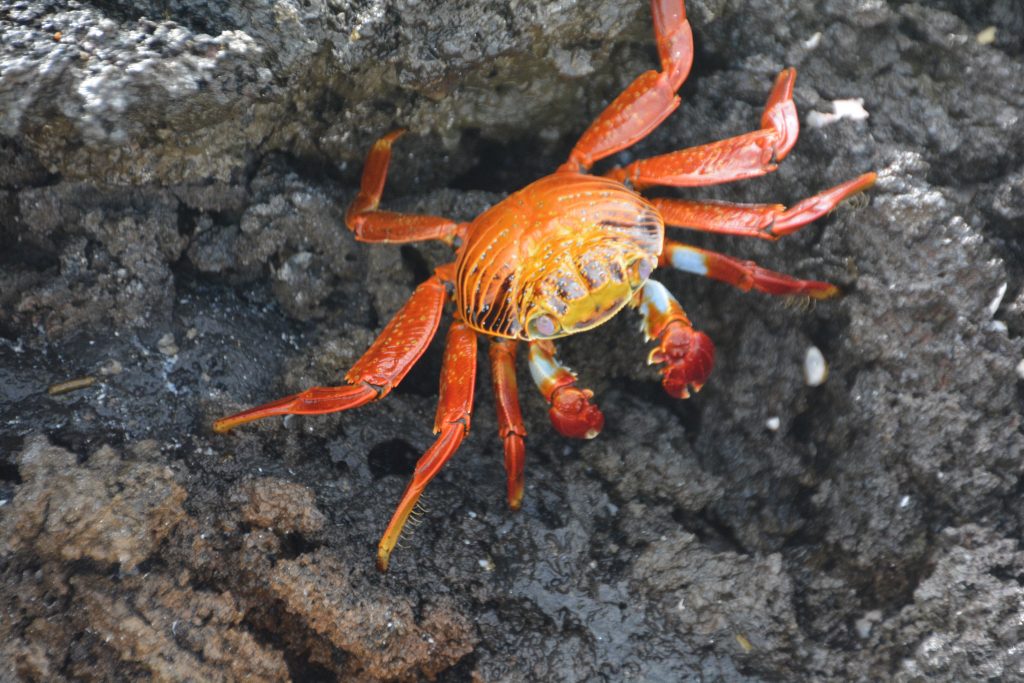
These Sally Lightfoot crabs were colourful and scurrying across all the lava rocks at the edge of the surf
But the highlight of the morning was the huge frigate birds and particularly the males who puff out their bright red chests to the size of a huge balloon as a way of attracting their dream mate. It was an unusual but entertaining scene to see a group of them in a tree with their chests puffed out, like a decorated Christmas tree.
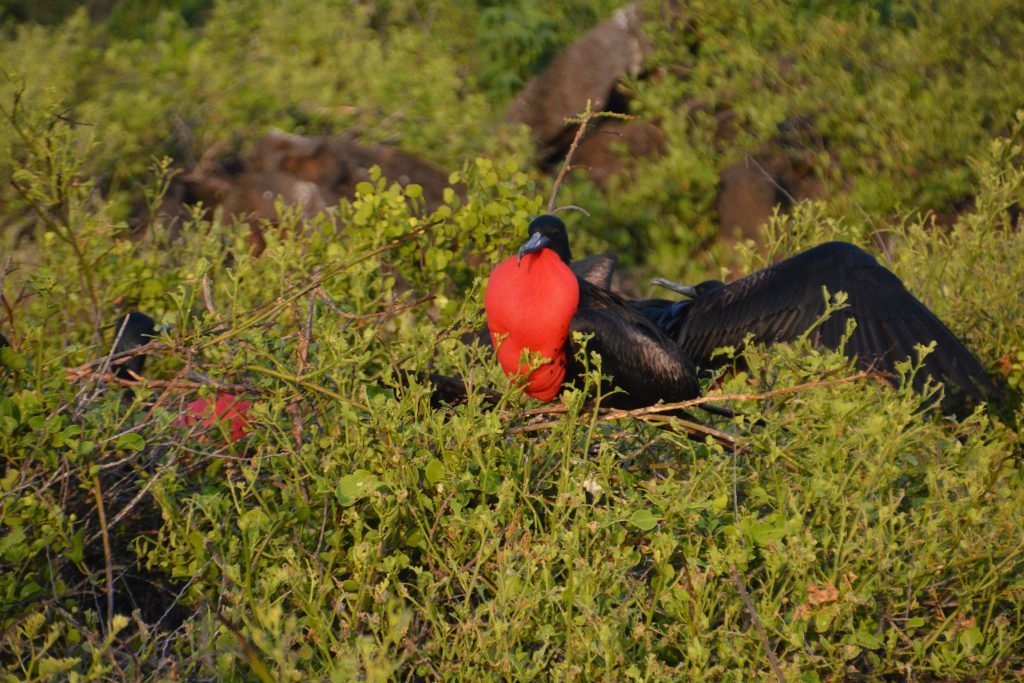
These guys are cool – frigate birds puff out their huge red necks and squawk until they attract a beautiful young damsel
But final farewells were soon upon us as we made our way to the small airport and eventually boarded our flights. The Archipell 1 and its crew of nine exceeded our expectations with our comfortable cabin and matrimonial bed, outstanding food and attentive staff. Our naturalist guide Gustavo was a fountain of information the entire trip, the weather was supreme and it was hard to fault any part of the entire experience.
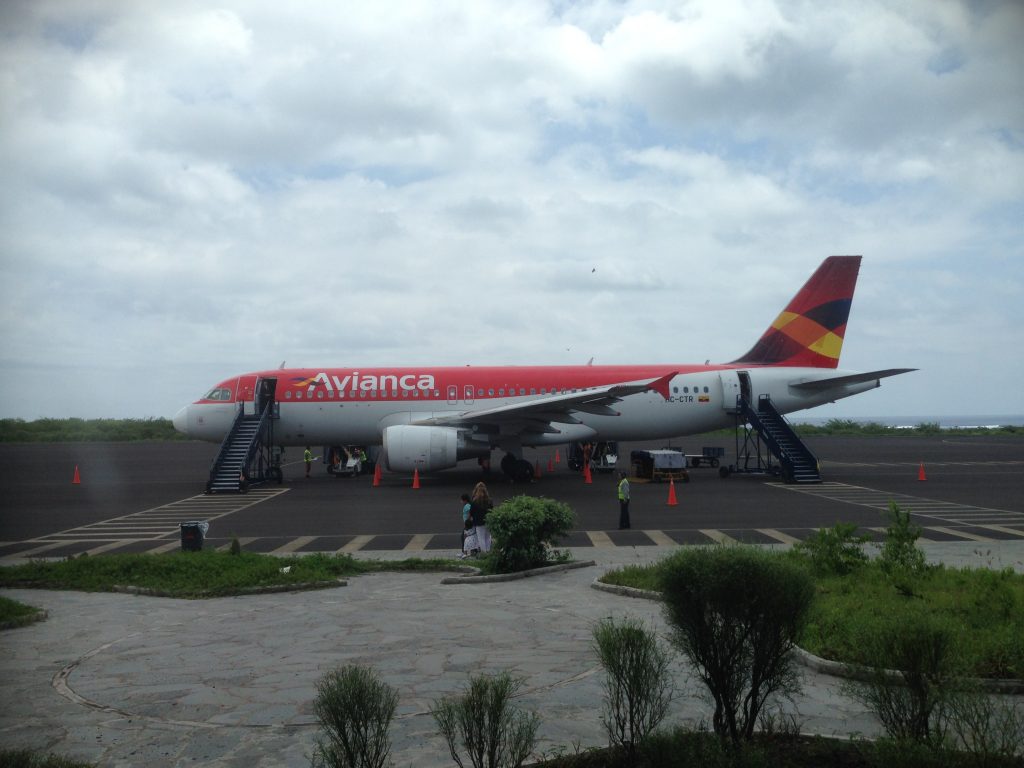
After such a great trip with super people parting is such great sorrow – but for us it was back to Tramp
But the star of the show was the Galapagos themselves, their unique ecosystem and how the Ecuadorean government had done a commendable job in maintaining – even restoring – the islands so that their unique animals and environment could survive the important tourism onslaught. If they stay on this path the Galapagos will truly be preserved for generations to come.
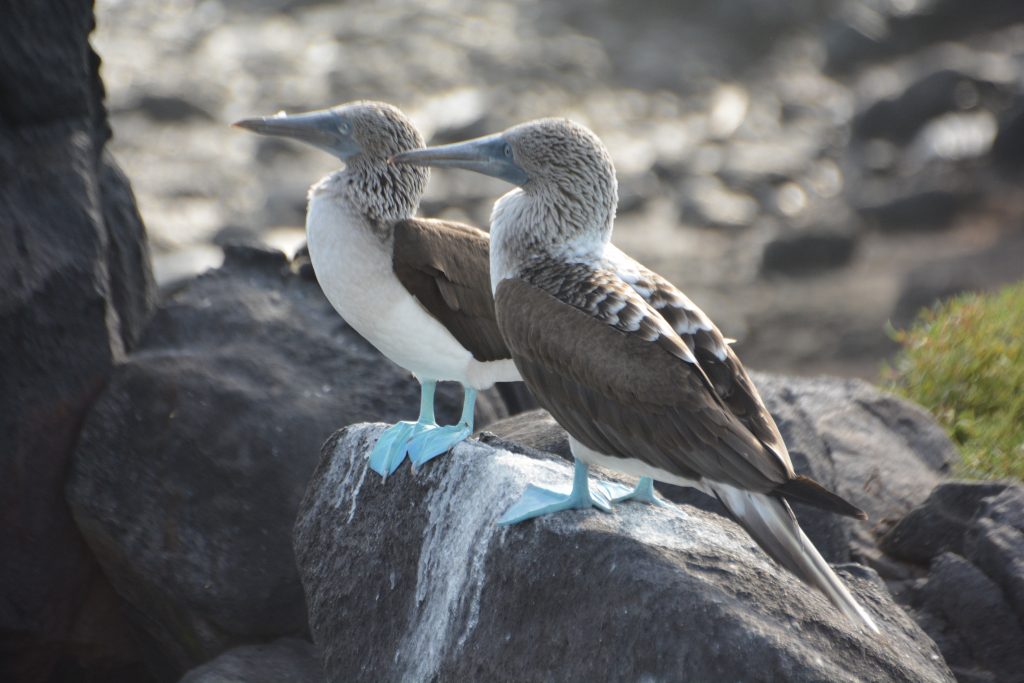
The blue footed boobies were undoubtedly the most common and friendly of the islands’ creatures but I resisted buying the T-shirt that says “I love boobies”
After two flights we ended up back in Quito, the air refreshingly cool, and reunited with Tramp who had patiently been waiting for us. That night back in our comfy home Julie and I raised our glasses to new friends, new places and new experiences. One thing for certain: the Galapagos rocks!
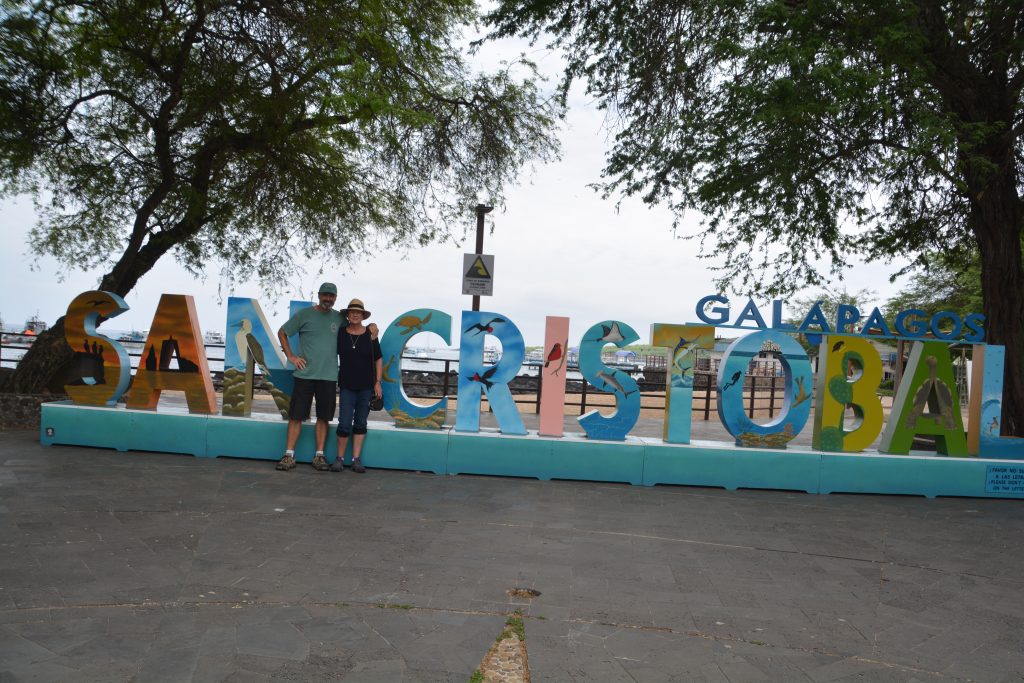
No way! Our most common photo of all our travels – standing in front of the giant letters of San Cristobal Island
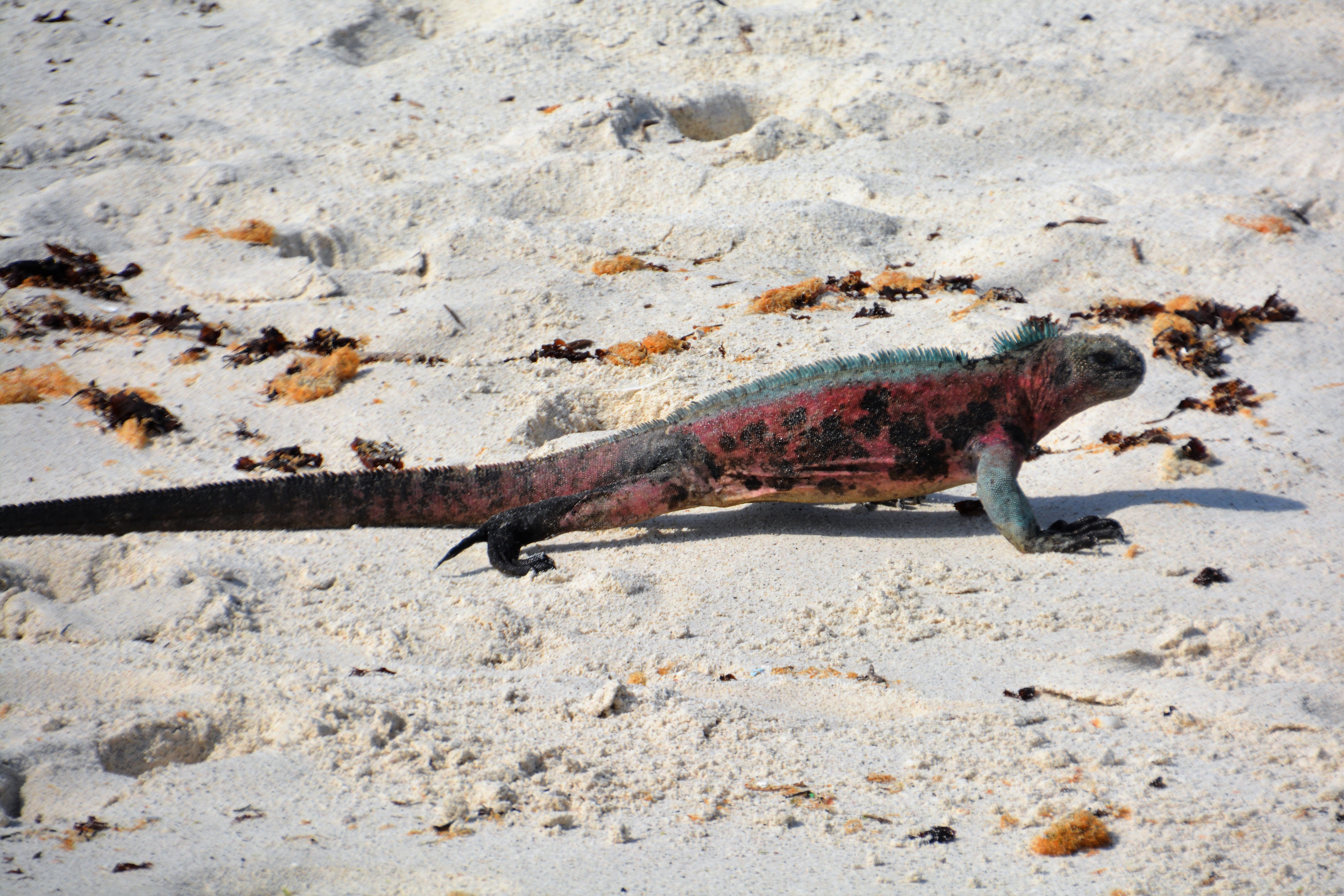













Comments
Special places, amazing creatures — No Comments
HTML tags allowed in your comment: <a href="" title=""> <abbr title=""> <acronym title=""> <b> <blockquote cite=""> <cite> <code> <del datetime=""> <em> <i> <q cite=""> <s> <strike> <strong>